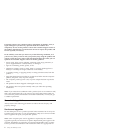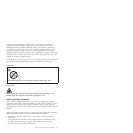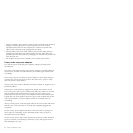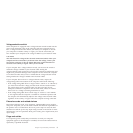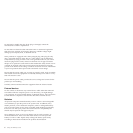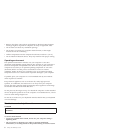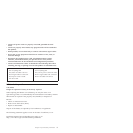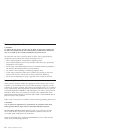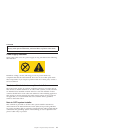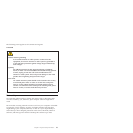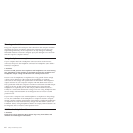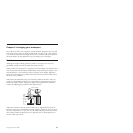
v Remove dust from vents and any perforations in the bezel. More frequent
cleanings might be required for computers in dusty or high-traffic areas.
v Do not restrict or block any ventilation openings.
v Do not store or operate your computer inside furniture, as this might
increase the risk of overheating.
v Airflow temperatures into the computer should not exceed 35° C (95° F).
v Do not install air filtration devices. They may interfere with proper cooling.
Operating environment
The optimal environment in which to use your computer is 10°C-35°C
(50°F-95°F) with humidity ranging between 35% and 80%. If your computer is
stored or transported in temperatures less than 10°C (50°F), allow the cold
computer to rise slowly to an optimal operating temperature of 10°C-35°C
(50°F-95°F) before use. This process could take two hours in extreme
conditions. Failure to allow your computer to rise to an optimal operating
temperature before use could result in irreparable damage to your computer.
If possible, place your computer in a well-ventilated and dry area without
direct exposure to sunshine.
Keep electrical appliances such as an electric fan, radio, high-powered
speakers, air conditioner, and microwave oven away from your computer
because the strong magnetic fields generated by these appliances can damage
the monitor and data on the hard disk drive.
Do not place any beverages on top of or beside the computer or other attached
devices. If liquid is spilled on or in the computer or an attached device, a short
circuit or other damage might occur.
Do not eat or smoke over your keyboard. Particles that fall into your keyboard
can cause damage.
Electrical current safety information
DANGER
Electrical current from power, telephone, and communication cables is
hazardous.
To avoid a shock hazard:
v To prevent possible shock hazard, do not use your computer during a
lightning storm.
v Do not connect or disconnect any cables or perform installation,
maintenance, or reconfiguration of this product during an electrical storm.
8 Safety and Warranty Guide





